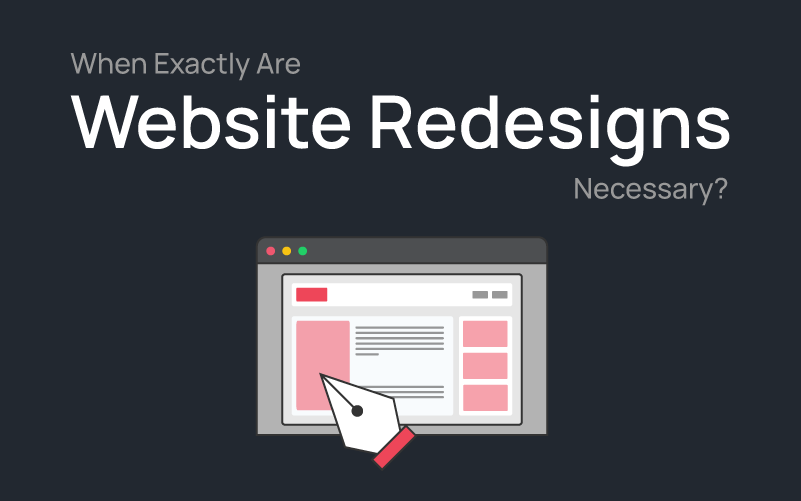Website redesigns can be a difficult and lengthy process depending on the scope of work required. But in many cases a site redesign is necessary to ensure you can secure high volume, quality website traffic and ultimately conversions. Let’s explore some of the more common scenarios where a redesign is needed, as well as some tips for businesses looking to undertake one.
Typical Website Redesign Scenarios
As highlighted by Hotjar, when we refer to website redesigns this means the website itself is looking to have an overhaul involving changes to a variety of aspects like visual layout, content and backend coding changes. This is not to be confused with a website refresh which usually focuses more on the aesthetic features of a website and leaves many core parts of the website untouched. So when is a website redesign needed?
1. Poor Website User Experience
The main aim of a website is to generate a high volume of traffic and conversions. However, this goal is difficult to achieve when users find the site difficult to navigate. This will likely lead to high bounce rates, a decline in traffic and ultimately a loss of potential revenue. A website redesign helps to restructure a website and streamline navigation to ensure users are able to quickly retrieve the information they’re searching for and provide a positive UX experience.
2. Website Is Outdated
It is important to always refresh your website every 3-5 years depending on the level of volatility and competition in your industry. For example, if your competition has recently undergone a website transformation then you may want to look at the same or risk losing potential leads. Outdated websites not only project a poor image of the business, but can mean that important services or pages aren’t front and centre for customers.
3. Rebranding Of Company
A rebrand is one of the most common needs for a website redesign. As a business, if you’re looking to showcase a new direction for your company, the website will need to reflect this. A redesign will help to project this new image to potential customers and sever any previous links to the old branding in the market. In this scenario, it’s important to ensure that current customers are able to effectively transition between the old and new website too.
4. The Website Isn’t Functioning Correctly
Outdated websites will overtime likely to lose their functionality, especially if not routinely maintained. This could come down to a number of reasons such as poor website hosting, outdated coding/plugins, or buttons not working correctly. While the smaller problems can be fixed with routine maintenance, for more significant issues a complete website redesign is the best way to ensure everything works cleanly.
Tips for Website Redesigns
When you decide to undertake a website redesign there are a few considerations to achieve the best possible final outcome:
- What parts of my current website work well and what don’t?
- Who are your customers and what pages are most relevant to them?
- Is your website structured for success?
- Are there any new features to be included on your website?
- How will you measure the success of the site redesign?
Another question to answer is whether the redesign will be conducted in-house or via a professional web development company. If your web development capabilities aren’t strong, it is always recommended to consult and use a skilled agency.
Once you have answered all of these questions and a plan has been prepared, make that plan is well communicated and timelines/budgets are agreed upon. You will also want to make sure the final migration won’t affect your SEO performance. Good luck on your website redesign!
